
Summer in Lakeland offers many outdoor activities, along with hot and humid weather. When it gets too hot, you can escape to an air-conditioned building — but your lawn can’t. Check out our nine summer lawn care tips to help your Lakeland lawn thrive.
- 1. Know the Characteristics of Your Grass
- 2. Don’t Overwater
- 3. Mow to the Proper Height
- 4. Make Sure Your Lawn has Proper Drainage
- 5. Change Your Schedule For Fertilizing
- 6. Aerate Your Lawn if Needed
- 7. Take Care of Lawn Repairs
- 8. Banish the Weeds
- 9. Combat Lawn Pests
- 10. Look Out For Summer Lawn Diseases
- FAQ
1. Know the Characteristics of Your Grass
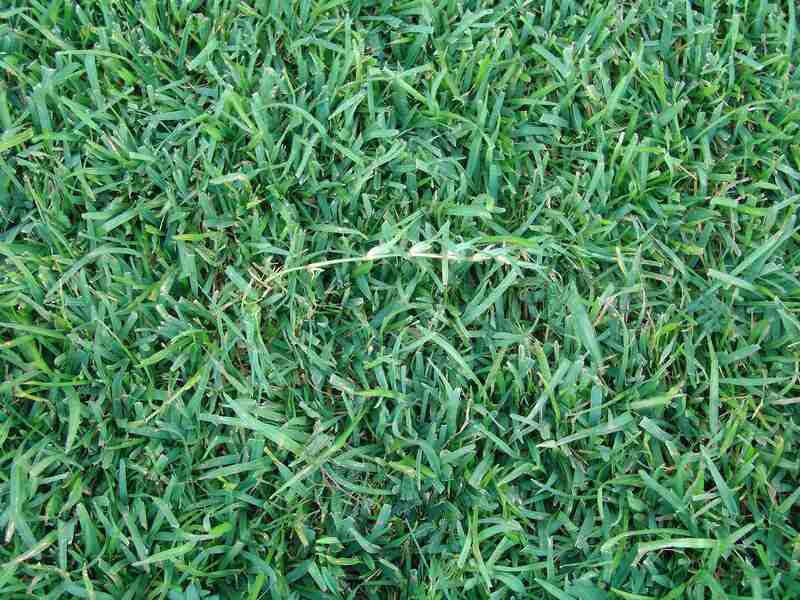
Photo Credit: James Becwar / Wikimedia Commons / CC0 1.0
Generally, Florida lawns are made up of warm-season grasses, and summer is prime growing season. While it tends to be high-maintenance, St. Augustinegrass is the most popular grass across Florida for its carpet-like sod and rich color. However, these four grasses also hold up well to Florida’s high summer temperatures:
- Zoysiagrass. This is a slow-growing grass that prefers sun but tolerates some shade. It also tolerates foot traffic and needs low amounts of fertilizer. Zoysiagrass does go dormant relatively quickly under drought conditions.
- Bahiagrass.The top choice for a low-maintenance lawn that holds up to full sun and harsh conditions. Use the Argentine variety of bahiagrass for the best lawn results.
- Centipede. This slow-growing grass doesn’t need much fertilizer or frequent mowing. However, it will go dormant in drought conditions. Check out our lawn-maintenance guide to learn more about centipedegrass.
- Bermudagrass. Another popular grass that can take summer sun and heat. It is highly drought-resistant and will stand up to foot traffic. On the downside, Bermudagrass can be high-maintenance and find its way into your flower beds.
2. Don’t Overwater
Let’s face it: Florida gets a lot of rain during the summer. Polk County, where Lakeland is located, gets a monthly average of 8 inches of rain in June, tapering to 6.8 inches in September. Also, hurricane season begins in June, bringing the risk of heavy rains.
Too much water puts your lawn at risk from disease and pests.
Lakeland has built-in watering limits. The city and Polk County have year-round watering restrictions for lawns and landscaping with a watering schedule of days and times. But there are other things you can do:
Turn off your sprinkler system. Running sprinklers only when needed ensures that you won’t water an already-wet lawn. (Or run afoul of city restrictions.)
When to water? Only water when you see signs of drought stress. Look for these signs:
- Dry spots
- Folded leaf blades
- Footprints remain visible on the lawn
3. Mow to the Proper Height
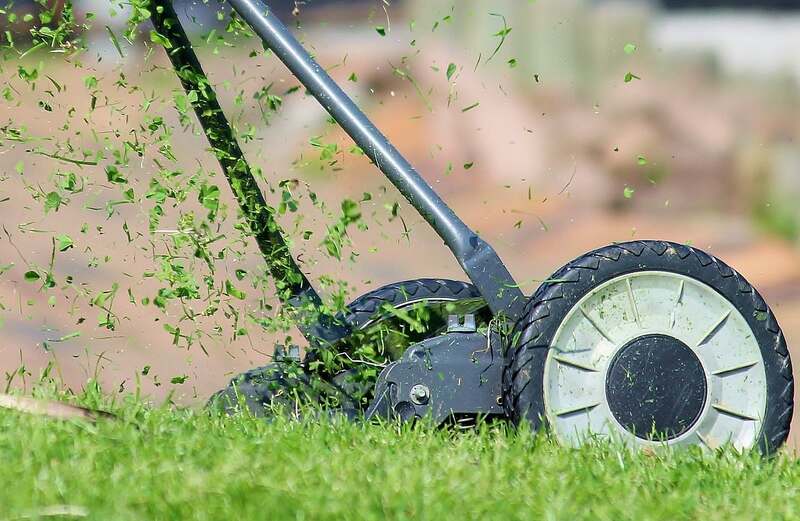
Since summer is prime growing season, you’ll have to cut the grass. However, you’ll get a break with slow-growing Zoysiagrass and centipedegrass. How high should you mow the grass? Try these guidelines for lawn mowing:
- Bahiagrass. 3-4 inches
- St. Augustinegrass. 3 ½-4 inches, depending on the cultivar
- Zoysiagrass. 1-2 inches
- Centipedegrass 1-2 inches
- Bermudagrass. ½ inch to 2 ½ inches, depending on the cultivar
Other Lawn Mowing Tips
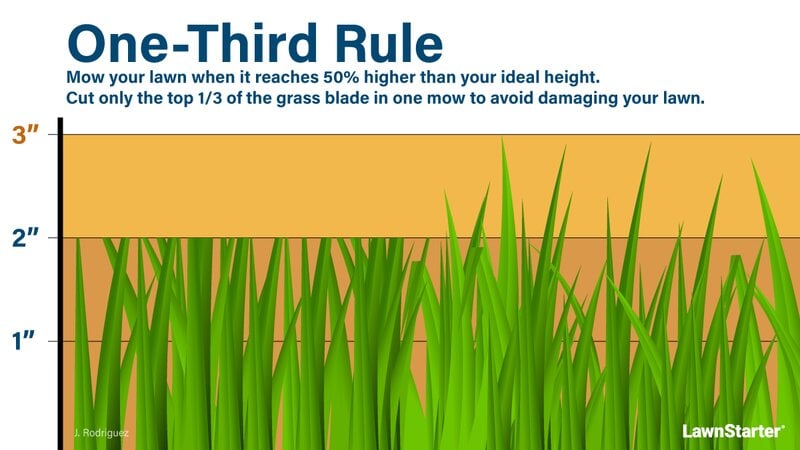
Best times to mow: Early morning lawn mowing protects you and the grass. Late afternoon, when temperatures start to cool, is the next best time.
Use the one-third rule. This means you only cut a third of the grass at each mowing. Grass blades create nutrients for the root system, so longer grass allows the roots to get food.
Mow when the turf is dry: This might be difficult, but dry grass won’t clog your mower or get damaged.
Don’t bag clippings: Grass clippings work as an organic fertilizer.
Keep the mower blades sharp: Dull blades tear the grass blades. You can sharpen mower blades at home with a few tools.
4. Make Sure Your Lawn has Proper Drainage
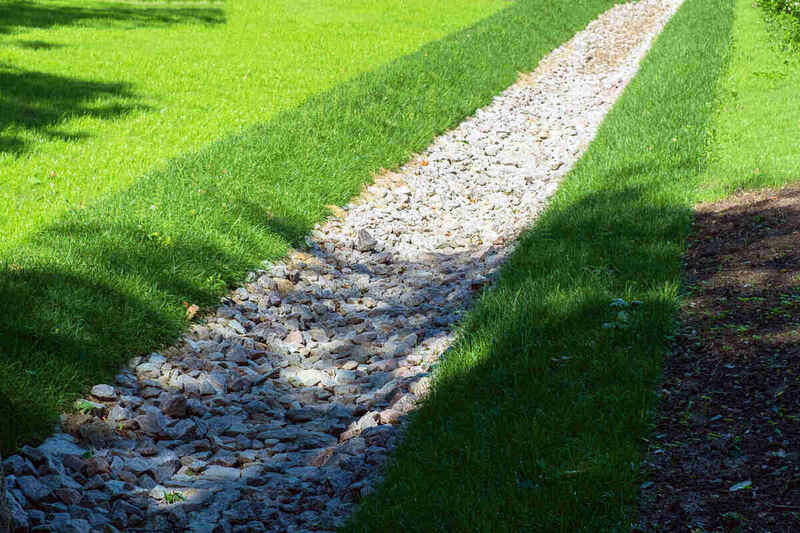
Florida’s heavy summer rains plus the threat of storms, make proper drainage a must for your yard and home. Too much water can create a number of problems:
- Standing water on the lawn puts the grass at risk for fungal diseases.
- Water that stands for an extended period will kill the grass.
- Standing water makes an excellent breeding ground for mosquitoes.
- Water that rushes toward your house can cause flooding or foundation damage.
There are some DIY measures that can improve drainage in your yard:
Build up low spots that hold water. Mound a soil/compost mix over the spot. Once stabilized, cover with grass seed.
Clean gutters and downspouts. Gutters overloaded with debris will send rainwater over the side to pool around your house.
Clean storm drains, too. If your property has or is close to a storm sewer or any other drainage, keep the openings clear of debris to prevent water backups. (Note: Lakeland’s Public Works department considers lawn clippings and debris left in the street to be an “illicit discharge” into the city’s stormwater system.)
A couple of other measures are possible DIY projects. But as there’s some engineering involved, you may want to call in a local landscaping pro.
French drain. This underground system consists of a perforated pipe that rests in a gravel-filled trench. Water from the French drain may be directed to a swale, or depending on regulations, a stormwater drain.
Create a swale. A swale is in essence a drainage ditch. It can be parallel to the road, or between properties. Plants and stones can be placed in the swale to prevent soil washout.
5. Change Your Schedule For Fertilizing
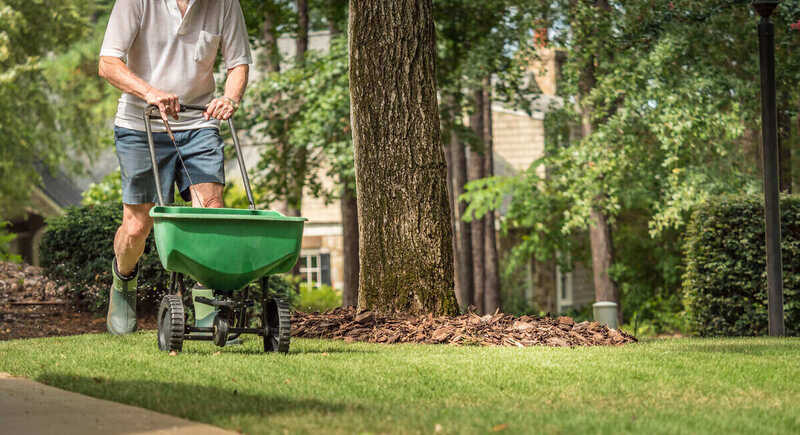
Look up “when to fertilize warm-season grasses,” and you may see suggestions to fertilize in early spring and fall, with a boost of fertilizer in early June.
However, that schedule won’t work for your Lakeland lawn. Polk County, where the city is located, bans the use of landscape fertilizers containing nitrogen and phosphorus from June 1- September 30.
The University of Florida suggests this course of action: Use a slow-release product in late May so that your lawn will get low doses of nitrogen during the summer. Then fertilize again in early October with fertilizer that has a soluble nitrogen component. This will reduce the possibility of nitrogen being released during the winter.
Pro Tip: For advice on how to fertilize your lawn during winter, check out our article, “9 Winter Lawn Care Tips in Lakeland, FL.”
A lack of nitrogen can turn centipedegrass, bahiagrass, and St. Augustinegrass yellow in summer. As an alternative to standard fertilizer, spraying dissolved iron sulfate (2 oz per 3–5 gallons of water per 1,000 square feet) on the lawn may help it green up temporarily.
But before applying any alternative or standard products, get a soil test to determine what nutrients your lawn truly needs. Too much iron (or any other nutrient) can damage your lawn.
6. Aerate Your Lawn if Needed
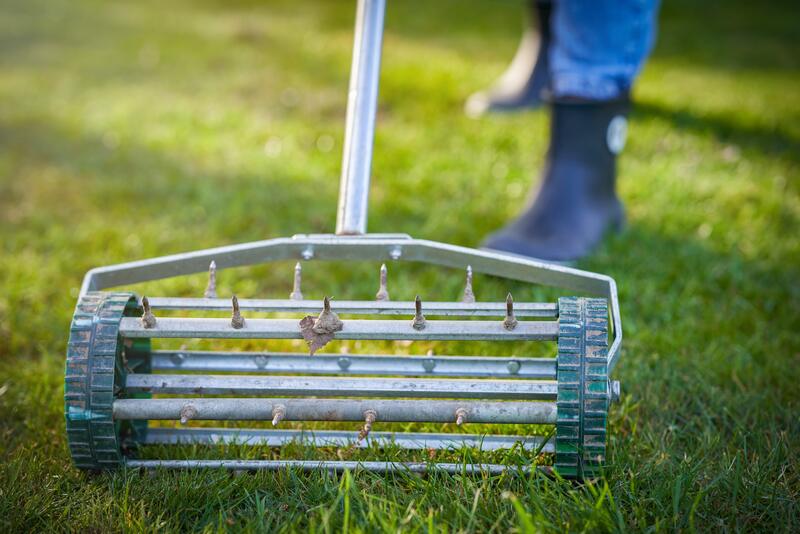
Compacted soil can prevent your lawn from getting needed water and nutrients, and can even aggravate existing drainage issues.
Soil can be compacted by many things, from heavy foot or vehicle traffic on your yard to overwatering. For warm-season grasses, it’s best to aerate from mid-April to mid-June. But how can you tell if your lawn needs aeration?
Try to penetrate the soil. Push a shovel, a screwdriver, or a sharpened pencil into the soil. If it’s difficult, your soil may be compacted.
Other signs of compacted soil:
- The grass is thinning.
- It has bare patches.
- It has frequent pest and disease issues.
What Aerating Method to Use?
So, how to aerate your lawn? You have two choices, core aeration or spike aeration.
Core aeration involves renting a machine. Many are gas or electric powered, though some can be operated manually. Core aerators remove plugs of dirt from the soil and allow water, air, and nutrients to reach grass roots. The downside: It looks like someone walked a pack of dogs through your yard and didn’t pick up after them.
Spike aeration can be done quickly and cheaply. Use a spading fork or pitchfork, or you can rent a machine, or buy a pair of spiked sandals and walk around the yard. The spikes push holes into the ground to allow in air and water. The downside is that it can increase compaction by pushing dirt against the side of the holes.
For more information, check out our guide, “How to Aerate a Lawn.”
7. Take Care of Lawn Repairs
If you notice damaged patches in your lawn, early summer is a good time to repair them. Things to consider before you dig up the yard:
Determine what happened. Is the area overwatered or underwatered? Is there evidence of disease or insect damage? If so, correct the issue before planting new grass.
Make sure the grass is actually dead. High heat and low water conditions will make warm-season grass go dormant in hot weather. Closely inspect the crowns (right above the soil); if they’re alive, then the grass is dormant. If discolored or dried out, then the grass is dead.
Sod, seed, or plugs? Sod and plugs will give quicker results, especially in large areas. However, seed can be used between April and July; bahiagrass and Bermudagrass are best if you’re growing from seed.
8. Banish the Weeds
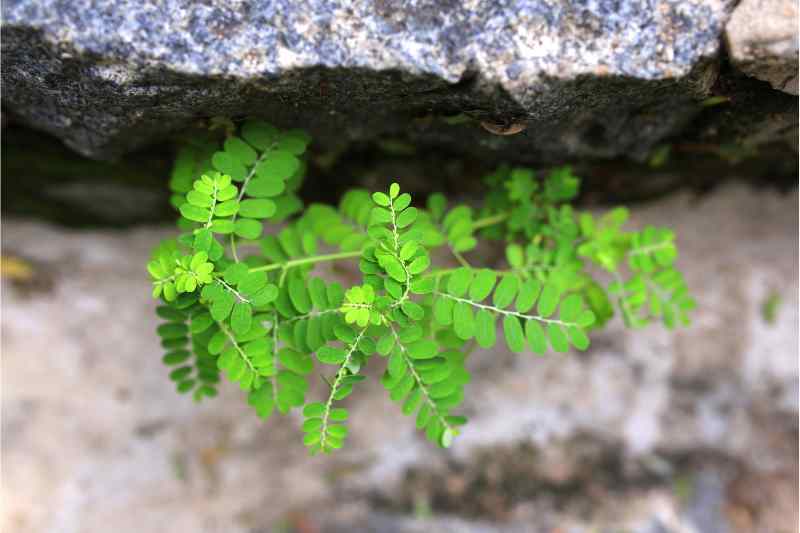
Weeds are hardy, no matter what time of year they sprout. So, you’ll see weeds in your Lakewood lawn during the summer, no matter how hot it gets. A few common summer weeds:
Chamberbitter. Also known as gripeweed, this aggressive weed reproduces quickly and can be notoriously hard to control once it develops its woody stem. It’s happy to grow in full sun or shade.
Crabgrass. This grassy annual likes compacted soil and is very prolific. (A single crabgrass plant can produce 150,000 seeds.) The bad news: Once it sprouts, there are few, if any, commercial herbicides that won’t kill most Florida turfgrasses along with the weeds.
Doveweed. This creeping weed can be mistaken for St. Augustinegrass. Unfortunately, seeds can be spread by mowing and watering. Be careful if you have pets: Contact with doveweed can cause dermatitis in dogs. Check out “How to Get Rid of Doveweed in Your Lawn” for more information.
How to Get Rid of Weeds
The best way to get rid of summer weeds is to prevent them. Maintaining a healthy yard, with proper watering and fertilization, will produce a thick lawn that will crowd out weeds. (Note: Zoysiagrass is a good choice for a weed-resistant grass.)
If you prefer chemical reinforcements, put down a pre-emergent herbicide no later than mid-February (or April for chamberbitter). If you’re too late for preventative measures, then use a post-emergent herbicide in late spring/early summer, when weeds start to grow. To avoid turf damage, look for herbicides that are specific to the weed and the grass type you have.
There are some non-chemical ways to get rid of summer weeds:
- Pull them. This works well with patches of chamberbitter and crabgrass.
- Change the soil conditions. Chamberbitter and doveweed like very moist soil. So check for overwatering, or slightly reduce the amount of water you put down.
- Wait it out. Crabgrass in particular will die when the temperatures drop. Then you can put down a pre-emergent come spring.
9. Combat Lawn Pests
Florida’s summer heat and humidity bring ideal conditions for lawn pests that can damage your lawn. While maintaining a healthy lawn is the best defense, there are some things you can do to battle them. A look at some common lawn pests in Florida:
Chinch bugs. These are Florida’s most damaging lawn pests. The little bugs live in your lawn and drain the sap from the grass. They particularly like St. Augustinegrass and Zoysiagrass.
What pesticides to use? Carbaryl or pyrethroid pesticides can be used to fight chinch bugs. Applying a preventative pesticide in April or early May can help prevent outbreaks, too. As chinch bugs live in thatch, dethatching your lawn in the spring can make it less hospitable to the bugs.
Other methods. Non-chemical methods that might help are Beauveria bassiana, which is a fungus, and beneficial nematodes.
For more information, check out our guide, “How to Get Rid of Chinch Bugs.”
Sod webworms. These moths lay eggs on your lawn that hatch into larvae. The larvae find St. Augustinegrass to be tasty, but will munch on any warm-season grass. One sign of damage is window feeding — where the leaf’s surface tissue has been removed, leaving clear tissue behind.
To avoid killing beneficial insects, avoid pesticides unless you have a serious infestation. For a non-chemical method to get rid of sod webworms, use parasitic nematodes, or try Bacillus thuringiensis, which creates a protein that’s toxic to the pests.
Armyworms. Like webworms, the moths lay eggs on your lawn. The resulting larvae eat corn, some fruits, and flowers, but prefer grass. Bermudagrass is a favorite, but they’ll eat crabgrass, too. (Note: We don’t suggest armyworms as weed control.)
To test, douse a patch of lawn with a solution of 1 tablespoon dish detergent to a gallon of water. That will bring the larvae to the surface.
Pesticides are used on commercial crops, but for lawns, there’s a risk of killing beneficial insects. Non-chemical methods include:
- Beneficial nematodes
- Bacillus thuringiensis
- Neem oil
Beneficial insects, like ladybugs and lacewing, are also a good defense. For more information, check out our guide on how to get rid of armyworms.
Fire ants. An invasion of red or black imported fire ants is not something to ignore. Disturb a colony and you, or your pet, will get a one-two punch of bites and stings. Usual symptoms are pain, itching, stinging, and swelling, but in extreme cases, the ants’ venom can produce potentially deadly anaphylactic reactions.
Unfortunately, the University of Florida reports that there are no means to eradicate fire ants. However, there are ways to control them:
For a small infestation, try pouring boiling water on the mound in early morning when ants are near the surface.
For a large infestation, try a two-step process.
- Apply ant bait throughout the yard with a spreader. The ants pick it up and carry it back to the queen, ultimately killing it.
- Treat individual mounds: Apply liquid, dust, or granular insecticide to the mound.
If the infestation is very large, or has spread to your house, it may be time to call a local pest control company.
For more information, check out our guide, “How to Get Rid of Fire Ants.”
10. Look Out For Summer Lawn Diseases
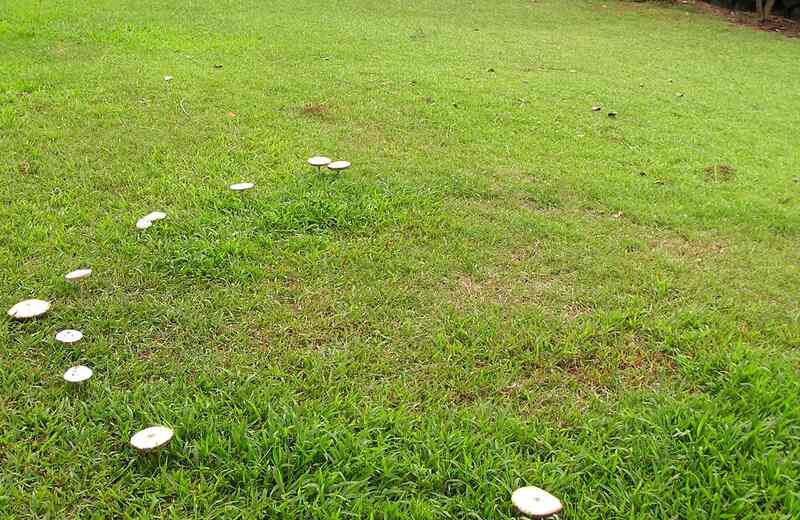
Photo Credit: Scot Nelson / Flickr / CC0 1.0
Lakeland’s hot, humid, and rainy summers create the ideal conditions for fungal diseases to attack your lawn. Some common ones:
Gray Leaf Spot
This chronic disease is confined to St. Augustinegrass in Florida. However, ‘Raleigh’ and ‘Seville’ are among the more-resistant cultivars. It may appear as a spot with gray spores or a lesion with a dark brown border. If the lawn is otherwise healthy, damage shouldn’t be severe.
For a post-emergent herbicide, products with Atrazine work well, but do not apply if the air temperature is above 85 degrees. Strobilurin (QoI) fungicides can be used as a pre-emergent. However, using the correct product and application timing can be tricky. Contact your local Extension office for information or consider calling a Lakeland lawn-care pro.
Fairy Ring
With this fungal disease, you’ll get a ring of mushrooms in your yard in these configurations:
- Rings with a zone of dead grass inside a zone of dark green grass.
- Rings with a band of dark green turf, with mushrooms or not.
- Just a ring of mushrooms.
Any lumber, tree stumps, or logs on, or buried in your yard is a good spot for the fungi to grow. In some cases, the fungi coat the soil so that it repels water, killing the grass. Note: Some of the mushrooms may be poisonous, so don’t eat them, and remove them if you have children or pets.
Products with azoxystrobin, flutolanil, and metconazole are among effective fungicides, according to the University of Florida. However, they won’t fix the dry soil.
For a non-chemical approach, aerating and dethatching your lawn will help. For more information, check out our guide, “How to Get Rid of Fairy Ring.”
Take-All Root Rot
This fungal disease attacks the roots, preventing the grass from obtaining nutrients and water. It can affect any kind of grass but hits St. Augustinegrass the hardest.
How to tell: Diagnosing take-all root rot can be tricky: The yellow or light green lawn patches can be mistaken for chinch bug damage. Or you may not see any symptoms until the disease has taken hold. Eventually, the grass will die out.
How to fight it: Generally, fungicides are used as a preventative measure; the disease is difficult to control once symptoms appear.
- Proper mowing techniques and drainage may reduce stress on the grass.
- Alabama A&M University suggests topdressing St. Augustinegrass with sphagnum peat moss.
Unfortunately, if the disease spreads, you’ll have to replace your lawn. Consider using centipedegrass as a replacement, as it is very resistant to the disease.
FAQ
No. Fire ants will nest anywhere around or in your house. They can be found in:
● Rotting logs
● Around trees
● Under pavement and buildings
● Inside electrical equipment and utilities
● Bathroom drains
● Walls
Here are a few steps to help you stay safe in the garden.
First, protect yourself from the sun:
● Don’t work outside between 10 a.m. and 4 p.m. when UV rays are highest.
● Wear sun-protective clothing, including a hat.
● Use sunscreen of at least 30 SPF.
● Stay hydrated.
● Take breaks if you need them.
When working with yard equipment:
● Wear appropriate clothing such as long pants, gloves if needed, and eye and hearing protection.
● Check your equipment; make sure it’s running properly.
● Clear the area. Make sure there’s no debris, toys, or tools in the way.
● Keep children and pets indoors.
To get rid of mosquitoes, start by eliminating their breeding grounds. Mosquito eggs hatch in standing water, so the less water around your home, the better. To clear out standing water:
● Don’t water to the point where there are standing pools in your yard.
● Clean out gutters and downspouts.
● Drain birdbaths.
● Don’t leave anything outside, like buckets or toys, that can collect rainwater.
If the biters have taken hold, chemical repellents can help. Consider products that contain picaridin or DEET. Use with caution: Always read the instructions on the label.
Prefer a natural repellant? Many scented plants help repel mosquitoes, and these three may add some zing to your spice cabinet, too.
● Lemon thyme
● Basil
● Lemongrass
When to Call in a Professional
If you’d rather enjoy summer activities than lawn care, or you’re struggling with lawn pests or diseases, consider calling a professional Lakeland lawn-care company. A local pro will understand your lawn care needs and keep your grass looking its best during the summer and beyond.
Main Image Credit: Ebyabe / Wikimedia Commons / CC BY-SA 2.0